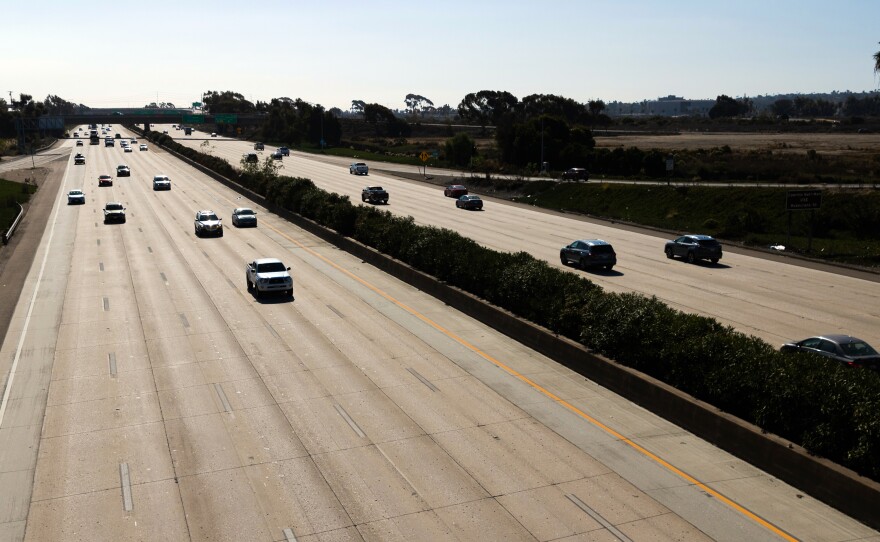Morning rush hour is much lighter nowadays compared to before the COVID-19 pandemic, but traffic is more constant throughout the day as remote workers take trips in their cars unrelated to their jobs.
That's according to an analysis of cell phone location data by the company Streetlight Data, which advises public agencies such as Caltrans.
Derrick Thrasher, a genomics scientist at the biotech firm Illumina, has been working from home since March 2020. Because he doesn’t have to commute to the office, he moved from San Diego's Clairemont neighborhood to a larger home in Escondido.
Overall, Thrasher said he still drives a lot less compared to before the pandemic. But he's also noticed himself taking more short trips in the afternoon just to get out of the house.
RELATED: How COVID-19 Is Changing San Diego’s Transportation Planning
"After I've been working from home all day and I realize I actually haven't really gone anywhere for a while, I might go to the dog park, take the dogs somewhere on a quick jaunt," Thrasher said.
Those driving habits are playing out among remote workers throughout the county, said Martin Morzynski, vice president of marketing for Streetlight Data. Telecommuters are generally home during the mornings, he said, but venture out more as the day goes on.
"There's a whole host of new driving that happens because people now have the flexibility to … do a shopping trip that would have previously been impossible because you're in the office," Morzynski said. "We believe that a lot of that midday driving has to do with errands and sort of casual driving."
RELATED: Teleworking Can Reduce Car Travel — But Not As Much As You May Think
Even while some people might be driving more often in the afternoons, overall driving on the freeways was down by about 9% last month compared to pre-pandemic levels, according to the San Diego Association of Governments (SANDAG). That is still enough to keep congestion down. The average speed measured at the county's highway "hot spots" during rush hour last month was 61 miles per hour, up from 50 miles per hour in February 2020.
But while traffic might be lighter on average compared to before COVID-19, Thrasher said it's also gotten less predictable.
"I don't think I've really nailed down the pattern," Thrasher said. "Often I'm surprised that there's actually less traffic at a certain time, or completely blindsided and finding a lot more traffic than I ever expected."








